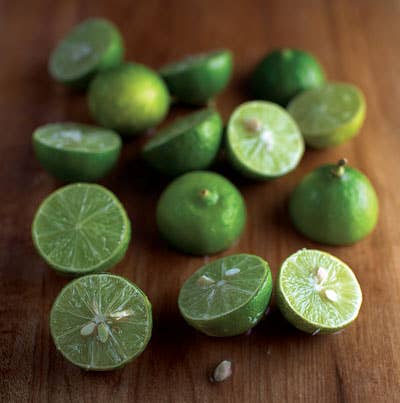
Tangy, creamy Key lime pie—a popular dessert at Joe's Stone Crab in Miami—derives its tartness from its tiny but powerful namesake fruit, the Key lime. Native to Asia and grown now in tropical and subtropical regions worldwide, the Key lime, a Ping-Pong ball-sized citrus fruit also known as the West Indian or Mexican lime, is the most widely used lime in kitchens outside the U.S. It's an essential ingredient in everything from salads to noodle dishes to marinades, prized for its dynamic acidity (which is at its greatest when the fruit is green and unripe) and copious juice. Mixed with eggs and sweetened condensed milk, the Key lime's zest and juice make for one intensely citrusy filling. The flavor of the Persian lime, the cultivar most readily available in U.S. markets, is much milder by comparison. So, why aren't Key limes as widely used here as in the rest of the world? It has something to do with the fruit's checkered new-world history. Arriving in the Caribbean with Christopher Columbus, the Key lime thrived in the region, including in Florida, up through the early 20th century. Then, in 1926, a hurricane wiped out most of the Sunshine State's crop, which was replaced with plantings of the larger, thicker-skinned Persian, a lime considered sturdier and therefore easier to cultivate and transport. A few of the original trees survived in the Florida Keys, where the fruit acquired its American name and where, in the 19th century, the eponymous pie was invented.
Keep Reading
Continue to Next Story










